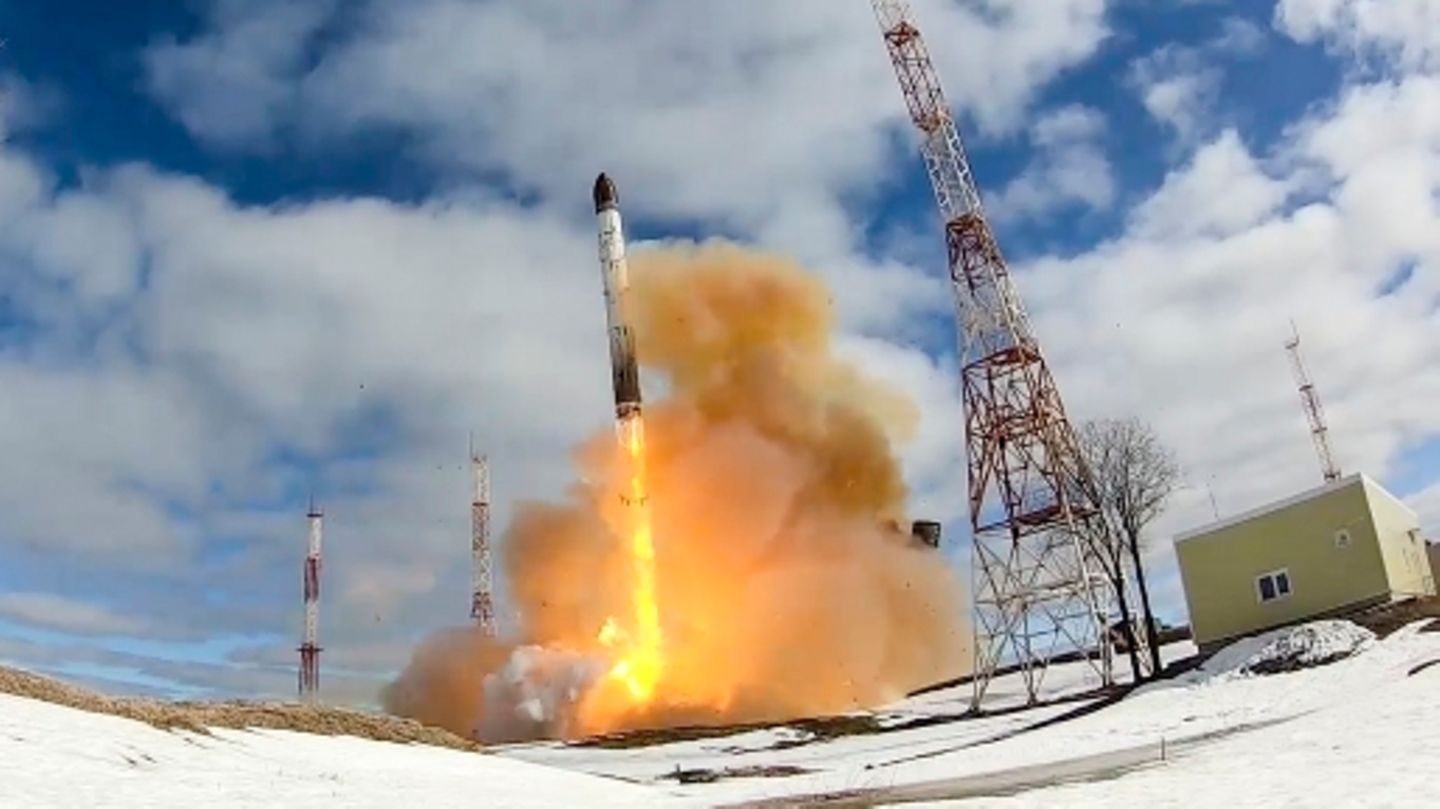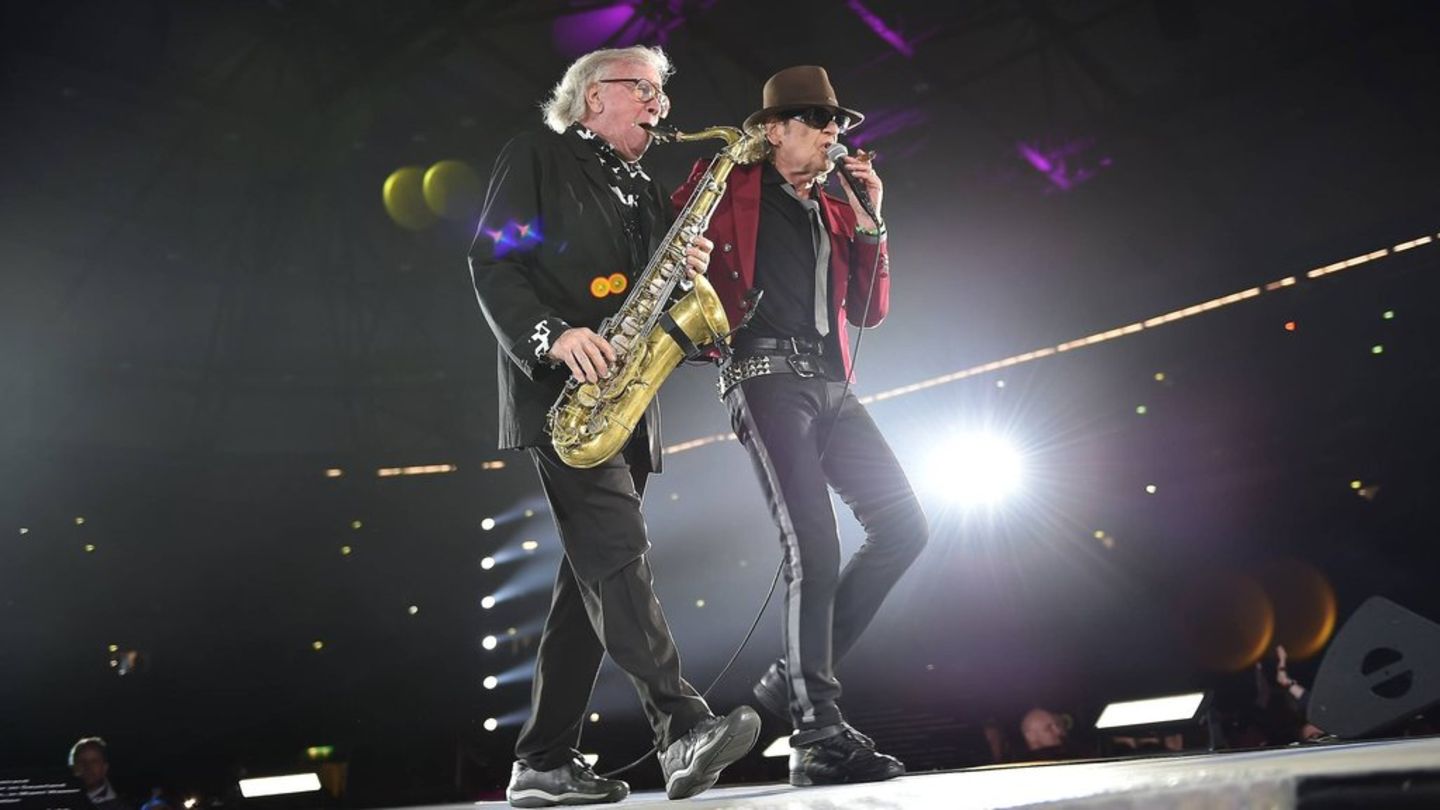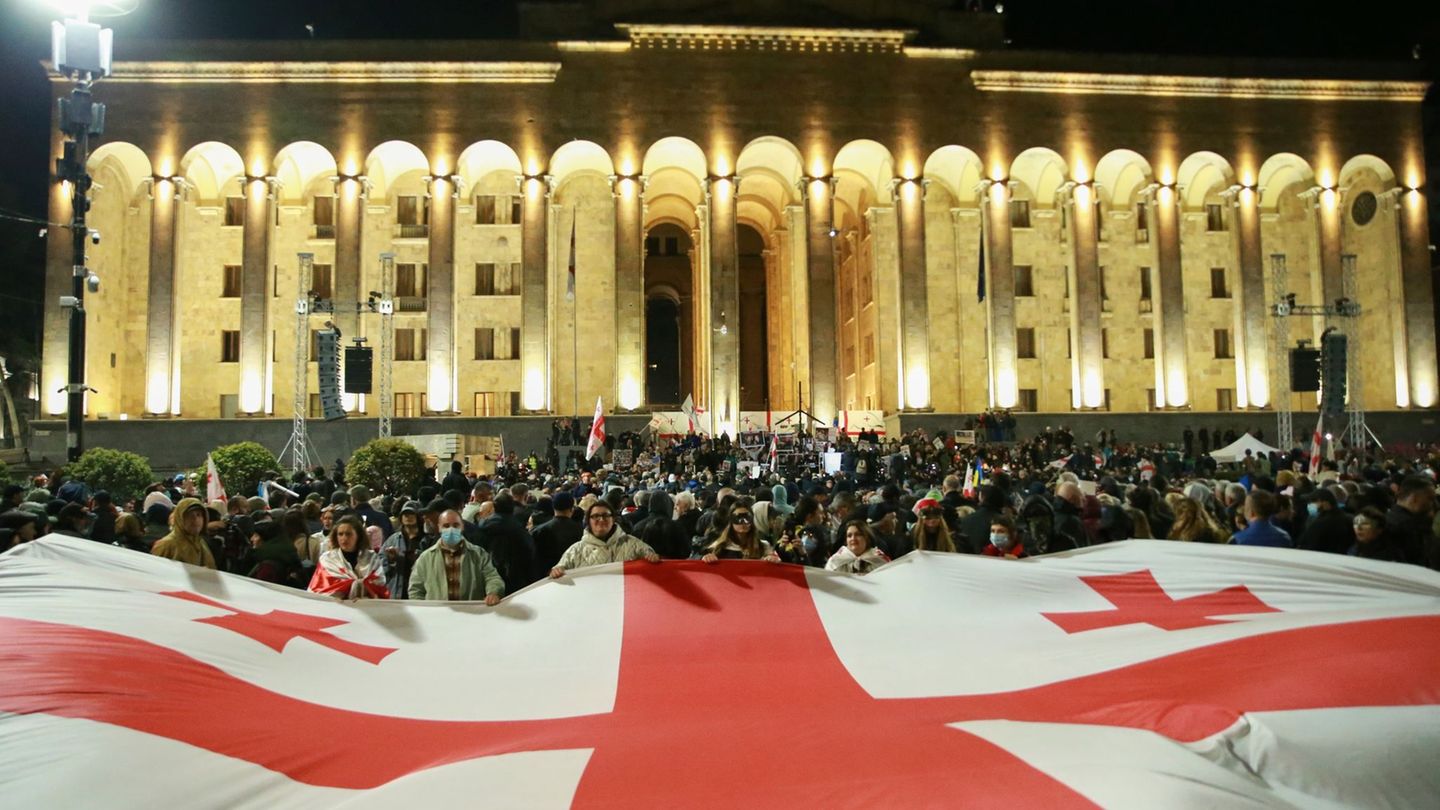Since Russia attacked Ukraine, the risk of using nuclear weapons has increased massively. Now Russia is preparing its population for the escalation with a new documentary about nuclear weapons.
The Sarmat intercontinental ballistic missile rises straight out of the shaft of the Plesetsk cosmodrome into the Russian sky. She draws a long trail of fire behind her. This is accompanied by action music. From the off, the state television station Rossiya 24 raves about a new “terrible weapon,” the pride of Russian rocket builders, a “reliable protection of the country from any kind of external attack.”
With the 40-minute documentary, which was shown on state television on Sunday for the national holiday, the nuclear power not only emphasized its independence, but also showed its nuclear weapons of mass destruction. The Sarmat has a range of 18,000 kilometers and can be equipped with nuclear warheads. This means that Russia can reach almost all destinations in the world via both the North and South Poles.
NATO does not want to give Russia an excuse for nuclear weapons
Filmmaker Alexander Rogatkin’s documentary provided an unusual insight into the life of the Strategic Missile Forces, which have been on high alert for three and a half months as part of the war of aggression against Ukraine. Kremlin chief Vladimir Putin issued such an order for the first time in more than 20 years in power – as a warning to NATO not to interfere. He cited “aggressive” statements by NATO leaders as the reason. Putin spoke of “self-defence”.
At the end of April he underlined that he was serious about the possible use of nuclear weapons. Demonstratively, he had a Sarmat (NATO code name: SS-X-30 Satan 2) tested. “It’s a really unique weapon,” Putin said. For a long time there will be nothing equal in the world. The rocket could go into series production independently of all international sanctions – and force “those to think who try to threaten our country with the zeal of hard-nosed, aggressive rhetoric”.
The USA reacted with irritation to the choice of words, but otherwise calmly – like the rest of NATO. They don’t want to give the Russians an excuse to stir things up even more. The Stockholm peace research institute Sipri, meanwhile, sees an increased risk of the use of nuclear weapons in view of the Ukraine war. This danger is therefore less in the use of such weapons in Ukraine, but rather in the fact that the war could escalate into a confrontation between Russia and NATO.
Threats at the same time as the ongoing Ukraine war
It is not new that Russia is threatening the West with nuclear weapons – Moscow has done this many times since 2005, said Sipri expert Hans M. Kristensen of the German Press Agency. What is new, however, is that such threats are coming at the same time as a conventional war in Europe. However, there is no evidence of steps to use nuclear weapons in Ukraine. Rather, the threats were aimed at NATO. “They remind people, ‘We have nuclear weapons. Don’t do anything stupid’.”
At the same time, there is alarm in Moscow that Ukrainian government officials are considering restoring the status of a nuclear-weapon state. Ukraine has the technology and the knowledge to do this, Putin warned. The former Soviet republic gave up its nuclear weapons in 1994 – in return, Russia guaranteed the country territorial integrity. It’s not worth anything anymore.
The risk of a nuclear confrontation has increased due to tensions between Russia and NATO, Kristensen said. There are also conflicts elsewhere in the world. “So it is fair to say that we are in a very precarious state at the moment.” An indirect consequence of the war was the Russian realization that their conventional armed forces were not as good as they thought. As a result, Russia is likely to rely more heavily on tactical nuclear weapons in the future.
90 percent of all nuclear warheads in Russia and the USA
As the new Sipri annual report shows, Russia (5977) and the USA (5428) still have around 90 percent of all nuclear warheads in the world. Above all, what is needed now is a relaxation of the nuclear rhetoric, said Kristensen. Russia’s Foreign Minister Sergey Lavrov also described the danger of a nuclear war as real. Russia always emphasizes that – unlike the USA – it has no right of first strike anchored in its military doctrine. But trust has been destroyed since the invasion of Ukraine.
Moscow has been keeping the tension high and fueling it for months, as the film on state television shows. Nuclear cases are shown and chains of command are explained. Rogatkin climbs into underground bunkers just outside Moscow, where the command center of the strategic armed forces is located, mounts rockets, shows silos and launch pads, meets commanders and designers. And gets access to the sanctuary of nuclear power: a gigantic hall with ICBMs of different eras and types. The people in front of it seem like dwarves.
Source: Stern
David William is a talented author who has made a name for himself in the world of writing. He is a professional author who writes on a wide range of topics, from general interest to opinion news. David is currently working as a writer at 24 hours worlds where he brings his unique perspective and in-depth research to his articles, making them both informative and engaging.




